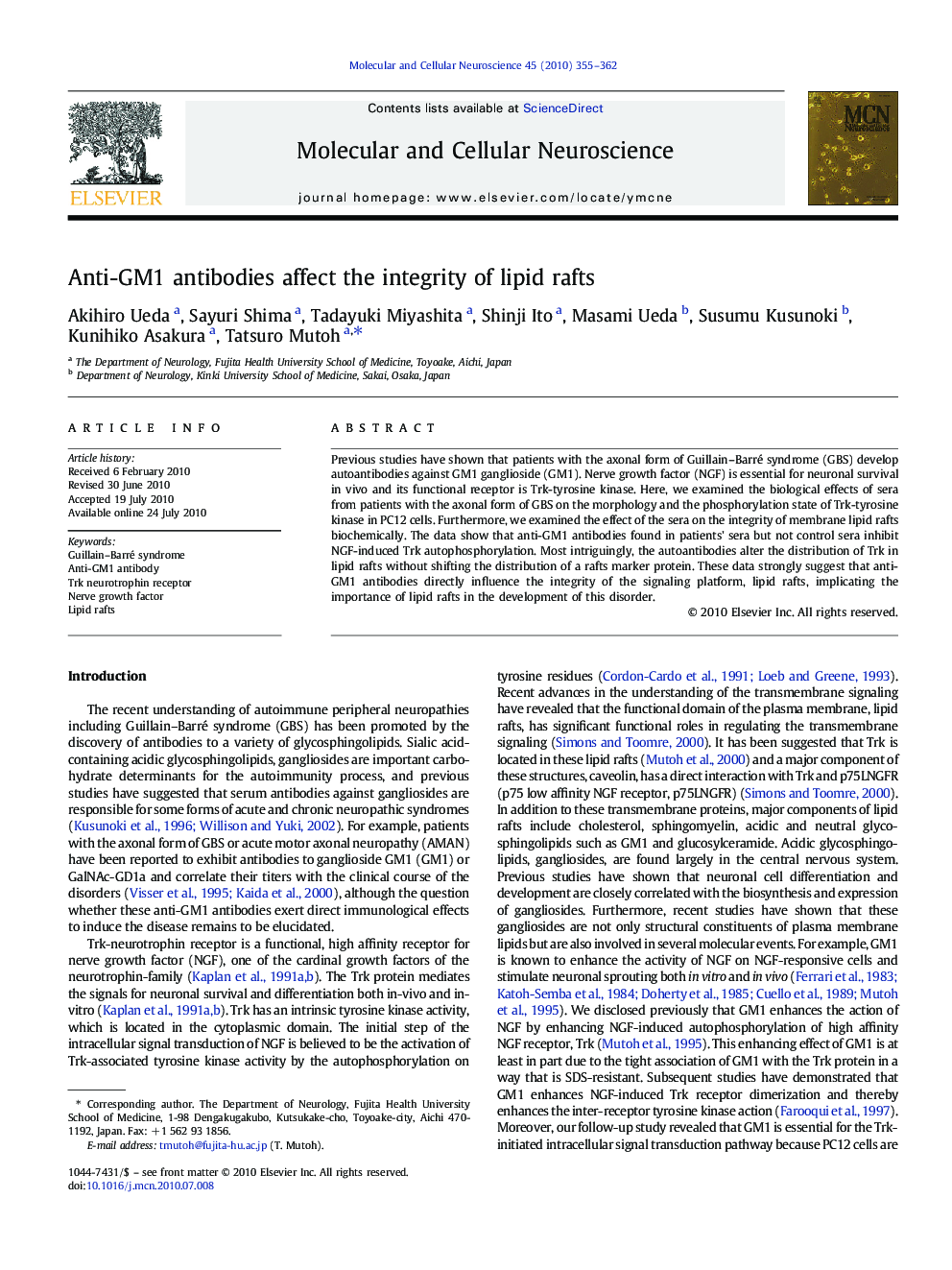| Article ID | Journal | Published Year | Pages | File Type |
|---|---|---|---|---|
| 10956607 | Molecular and Cellular Neuroscience | 2010 | 8 Pages |
Abstract
Previous studies have shown that patients with the axonal form of Guillain-Barré syndrome (GBS) develop autoantibodies against GM1 ganglioside (GM1). Nerve growth factor (NGF) is essential for neuronal survival in vivo and its functional receptor is Trk-tyrosine kinase. Here, we examined the biological effects of sera from patients with the axonal form of GBS on the morphology and the phosphorylation state of Trk-tyrosine kinase in PC12 cells. Furthermore, we examined the effect of the sera on the integrity of membrane lipid rafts biochemically. The data show that anti-GM1 antibodies found in patients' sera but not control sera inhibit NGF-induced Trk autophosphorylation. Most intriguingly, the autoantibodies alter the distribution of Trk in lipid rafts without shifting the distribution of a rafts marker protein. These data strongly suggest that anti-GM1 antibodies directly influence the integrity of the signaling platform, lipid rafts, implicating the importance of lipid rafts in the development of this disorder.
Related Topics
Life Sciences
Biochemistry, Genetics and Molecular Biology
Cell Biology
Authors
Akihiro Ueda, Sayuri Shima, Tadayuki Miyashita, Shinji Ito, Masami Ueda, Susumu Kusunoki, Kunihiko Asakura, Tatsuro Mutoh,
